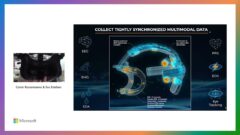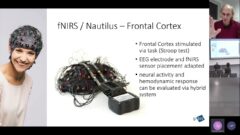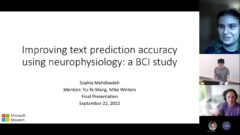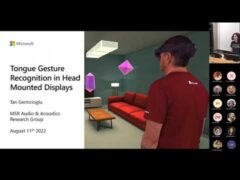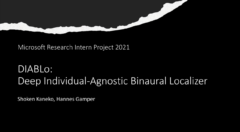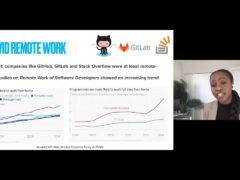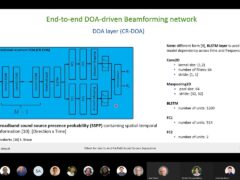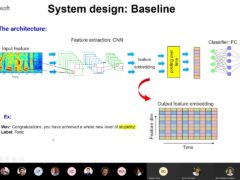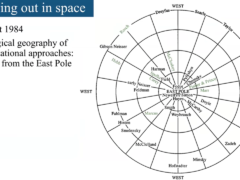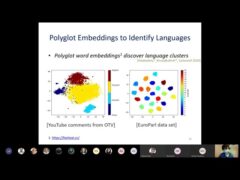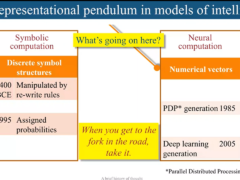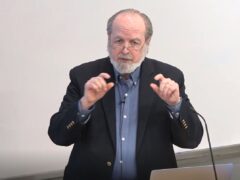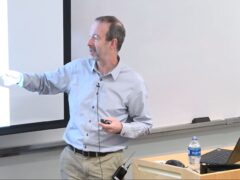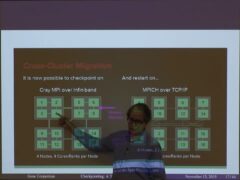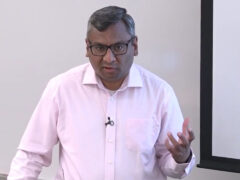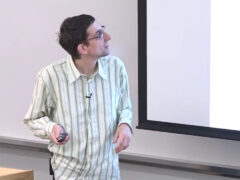Project Florence
Project Florence is a speculative glimpse into our future, where both our natural and digital worlds could co-exist in harmony through enhanced communication. Combining natural language research, biology, design, and engineering, we have created the first instantiation of a plant to human interface through the power of language. In this system, the user first attempts to communicate with or influence the plant through modulated natural language using a Surface computer. The conversation received from the human is analyzed for sentiment and semantic content using a Natural Language Algorithm. The resulting analysis is interpreted into signals that are used to modulate a light source that projects onto the plant. During this conversational turn, the chemical and electrical reactions from the plant and information about its environment are observed. Those signals from the plant are combined with the linguistic input to generate a conversational response from the plant. The resulting response back to the human is a transformation of the original input, driven by linguistic trees as well as lexical paraphrases, with influence based on the data from its sensors. Although the plant does not fully understand the linguistic information, the resulting output is affected in novel and unpredictable ways based on its state. Project Florence provides a base for future research and applications for environmental studies, biological sensors and gen-expressions and new opportunities to bridge our digital and natural worlds together through computation.
- Series:
- Microsoft Research Talks
- Date:
- Speakers:
- Helene Steiner
- Affiliation:
- Microsoft Research UK
-
-

Asta Roseway
Principal Research Designer / Fusionist
-

Chris Quirk
Partner Researcher
-

Helene Steiner
Post Doc Designer
-

Paul Johns
Principal Research Software Development Engineer
-
-
Series: Microsoft Research Talks
-
Decoding the Human Brain – A Neurosurgeon’s Experience
Speakers:- Pascal Zinn,
- Ivan Tashev
-
-
-
-
Galea: The Bridge Between Mixed Reality and Neurotechnology
Speakers:- Eva Esteban,
- Conor Russomanno
-
Current and Future Application of BCIs
Speakers:- Christoph Guger
-
Challenges in Evolving a Successful Database Product (SQL Server) to a Cloud Service (SQL Azure)
Speakers:- Hanuma Kodavalla,
- Phil Bernstein
-
Improving text prediction accuracy using neurophysiology
Speakers:- Sophia Mehdizadeh
-
-
DIABLo: a Deep Individual-Agnostic Binaural Localizer
Speakers:- Shoken Kaneko
-
-
Recent Efforts Towards Efficient And Scalable Neural Waveform Coding
Speakers:- Kai Zhen
-
-
Audio-based Toxic Language Detection
Speakers:- Midia Yousefi
-
-
From SqueezeNet to SqueezeBERT: Developing Efficient Deep Neural Networks
Speakers:- Sujeeth Bharadwaj
-
Hope Speech and Help Speech: Surfacing Positivity Amidst Hate
Speakers:- Monojit Choudhury
-
-
-
-
-
'F' to 'A' on the N.Y. Regents Science Exams: An Overview of the Aristo Project
Speakers:- Peter Clark
-
Checkpointing the Un-checkpointable: the Split-Process Approach for MPI and Formal Verification
Speakers:- Gene Cooperman
-
Learning Structured Models for Safe Robot Control
Speakers:- Ashish Kapoor
-





